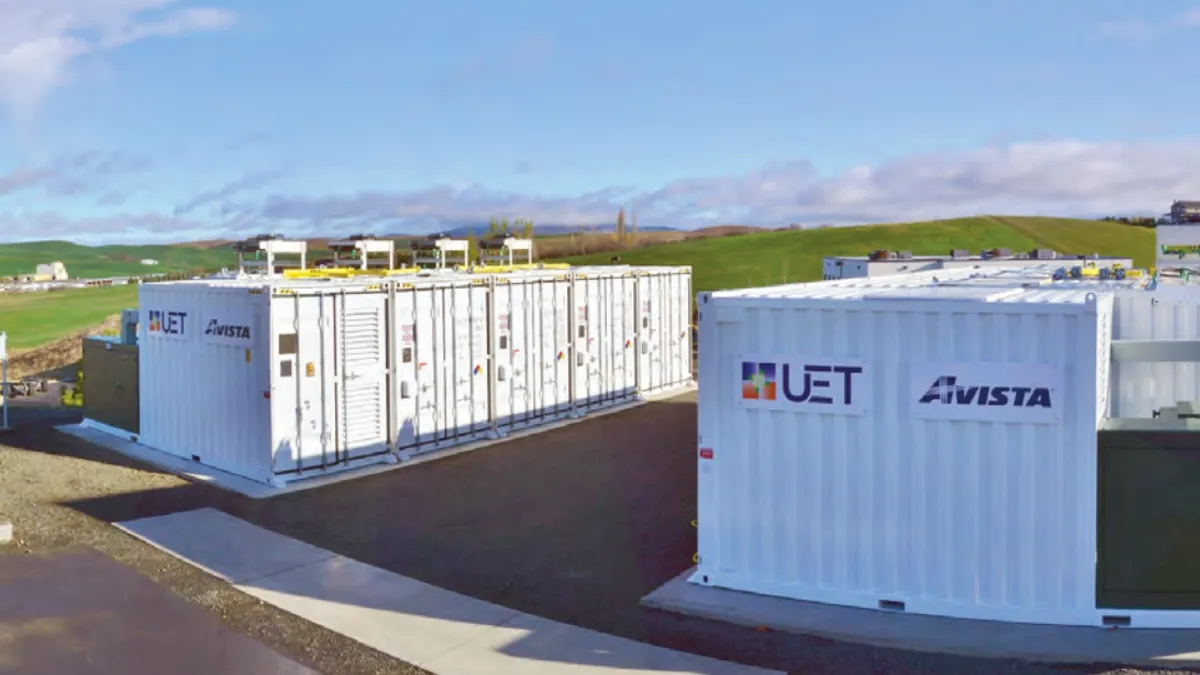Dive Brief:
-
The Snohomish County Public Utility District in Washington has installed a 2 MW, 8 MWh vanadium redox flow battery (VRFB) that is due online in the first half of next year, according to Windpower Monthly.
-
The VRFB battery is being supplied by UniEnergy Technologies and will use modular energy storage architecture (MESA) technology.
-
The VRFB project is one of several energy storage projects Snohomish PUD has commissioned to adapt its grid to accommodate more renewable energy resources.
Dive Insight:
Lithium-ion batteries have taken the lion’s share of the energy storage market, but technology advances to flow batteries that bring down costs and improve their safety and environmental profile are likely to boost installations.
The Snohomish flow battery is the first to use the MESA storage integration technology, according to Windpower Monthly.
The flow battery installation is part of a larger energy storage initiative undertaken by Snohomish, which includes two 1-MW, 0.5-MWh lithium-ion batteries, one made by GS Yuasa International and supplied by Mitsubishi and the other manufactured by LG Chem, that were installed in 2015.
About $7 million of funding for Snohomish’s $15 million of battery project, which includes the flow battery, came from Washington’s Clean Energy Fund. All were developed by Doosan Gridtech, an energy storage control software developer that was started in in 2011 by David Kaplan, who used to work at Snohomish.
Doosan Gridtech also helped develop the MESA platform, Windpower reports.
Doosan Gridtech was known as 1Energy Systems until it was acquired by Doosan Heavy Industries & Construction of South Korea in mid-2016.














